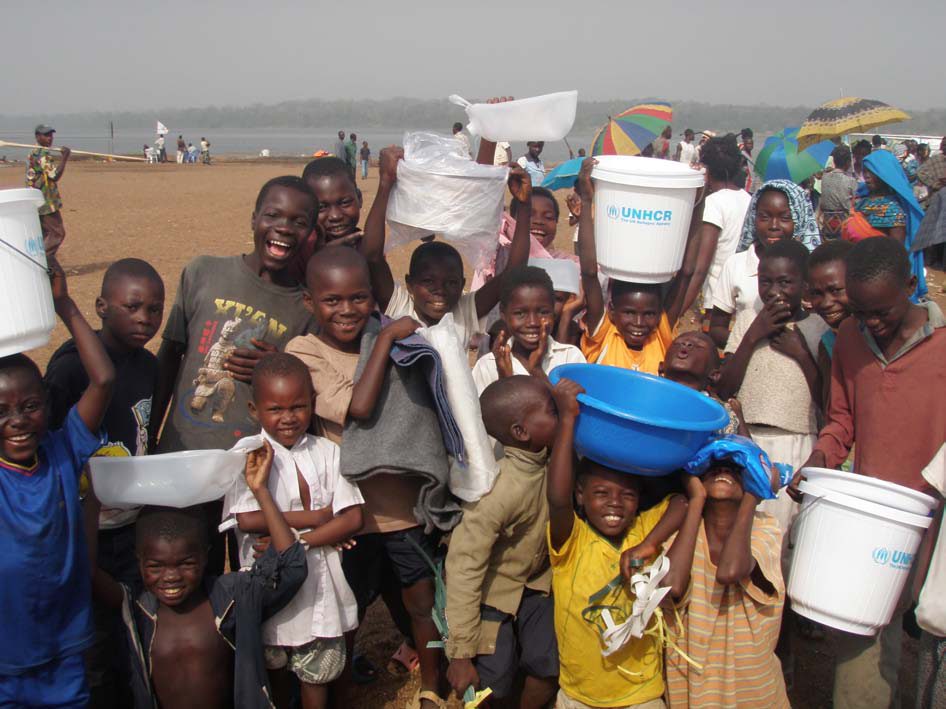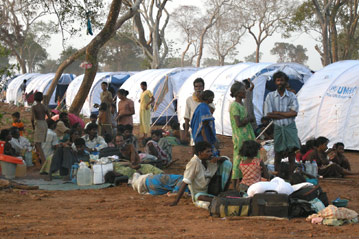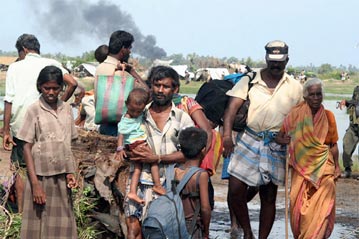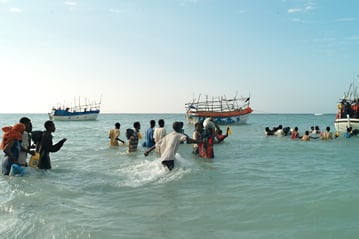Some 9,000 Chadians move to IDP camp after brutal village attacks
Some 9,000 Chadians move to IDP camp after brutal village attacks

HABILE CAMP, Chad, March 10 (UNHCR) - Some 9,000 Chadians have arrived in UN refugee agency trucks and on their own at the Habile site for internally displaced persons after brutal attacks on two villages left houses torched and the ground strewn with dead.
A United Nations team headed by UNHCR reached the burnt out villages of Tiero and Marena on Sunday, a week after the March 31 attacks. Survivors blamed the attacks on janjaweed militiamen on horses and camels, assisted by Chadian rebels with heavy weaponry and vehicles. Decomposing bodies still lay on the ground and smoke hung in the air from the last of the fires that had destroyed their houses
Estimates of the death toll have risen to between 200 and 400, although the exact number may never be known. With improved security, friends and relatives have returned to bury the dead. Victims were buried where they fell, often in common graves. Many who survived the attacks - particularly the elderly and young children - died in subsequent days from exhaustion and dehydration, often while fleeing. About 80 additional people were wounded.
The attacks on the villages 45 kilometres east of the UNHCR sub-office in the village of Koukou-Angarana were far worse than initially thought. An estimated 8,000 local residents and internally displaced persons (IDPs) had been living in Tiero and Marena. Residents of other villages in the area also fled.
More than 9,000 Chadians from 31 villages have now arrived at the new Habile site for IDPs in UNHCR vehicles or by themselves. They joined another 9,000 who had fled earlier attacks in the region, especially last November and December when inter-communal violence left more than 200 dead and many wounded. The precise number of new IDPs remains unclear, and additional names are being presented to aid agencies daily. Many new arrivals had already been displaced several times in the past year.
Many of the wounded were collected along the roadside by the International Committee of the Red Cross (ICRC) and brought to the Goz Amir refugee camp health centre. Twenty-eight IDP children were admitted to the feeding centre, while 12 elderly Chadians are being treated, especially for exhaustion. More serious cases were referred for treatment in Goz Beida, a two-hour drive from the camp.
The majority of the IDP population comprises women and children; the whereabouts of many men remains unknown. UNHCR is working with the heads of the 31 villages represented in the new Habile site to collect the names of those present, highlighting vulnerable persons, those missing, and those confirmed dead, to facilitate family tracing and other protection activities.
The inter-agency assessment mission led by UNHCR to Tiero and Marena had found a situation that a UNHCR officer described as "apocalyptic." The decomposing bodies of two men who had been shot dead - one a man of 70, the other a 30-year-old father of eight children - lay a kilometre outside the Mayo section of Tiero village.
Hundreds upon hundreds of homes had been burned to the ground, and a small fire was still burning in one section of Tiero village. An overwhelming stench came from the rotting carcasses of domestic animals that had been hit by stray bullets, consumed by fire or died of thirst, as the owners had no time to untie them. Famished and frightened dogs barked incessantly.
People had little or no time to flee: many essential household goods, food and domestic animals were left behind. Along the route were strewn belongings abandoned by those who died on the way or collapsed and were brought to Goz Amir camp health centre for treatment.
The situation appears to have stabilised for the time being, with a massive deployment of Chadian forces to the region. While much remains to be done, a rapid response by UNHCR and other humanitarian agencies has succeeded in reducing the mortality and suffering of Chadians affected by this latest crisis.
Items including plastic sheeting, soap, buckets and jerry cans have been distributed to all new arrivals in Habile, with distribution of blankets and mats to take place in the coming days. Food rations and water are also being supplied.
There are an estimated 140,000 internally displaced persons in eastern Chad. The region also hosts 235,000 Sudanese refugees, more than 225,000 of them in a dozen UNHCR-run camps. Chad also has 48,000 refugees from the Central African Republic, more than 46,000 of them in four UNHCR-run camps in the south of the country.
By Matthew Conway in Habile, Chad








